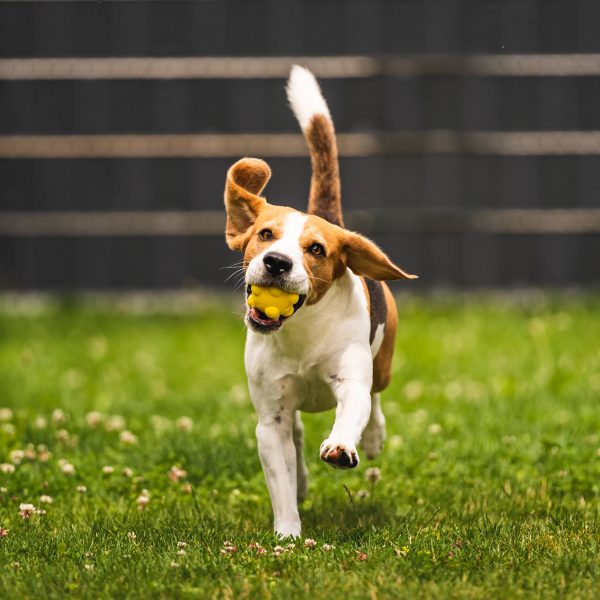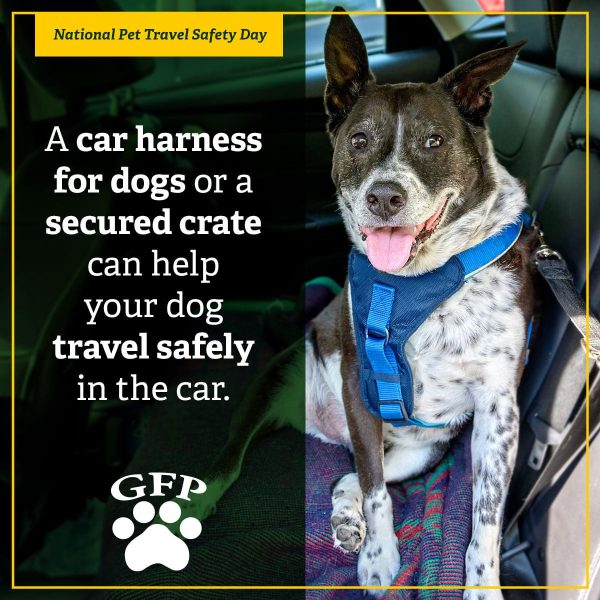10 Ways to Prevent Your Dog From Getting Lost

Your dog relies on you to take care of them and keep them safe. This includes measures to keep them from getting lost. This is easier for some dogs than others, especially because some dog breeds are known escape artists with an instinct to wander. Here are a few ways to prevent your dog from getting lost:
1. Make Sure Your Yard is Securely Fenced
Tall, secure fencing around your yard is one of the best ways to prevent your dog from getting lost. It’s also one of the ways to create a dog-friendly backyard. With a good fence in place, your dog can run freely in your yard and you don’t have to worry as much about them running off.
A fence is not always foolproof. Gates can be left open and dogs can still get out, so you want to make sure you have other measures in place as well. This is particularly true if you have a Siberian Husky or another one of the breeds known for being escape artists.
In addition to a sturdy, tall fence, you can also install a concrete base for the fence to reinforce it and to prevent digging out. You can also obstruct their view to hide temptations to escape and other things to help keep your dog from escaping the yard.
2. Do Some Specific Training
In addition to making sure your dog has mastered basic commands, especially the recall command, you can also do some other specific training with them that can help prevent them from getting lost.
Instead of allowing them to bolt out of the door the second it is open, you can work to train your dog to sit and wait. Depending on the breed, you can work on stay, leave it, and recall commands for off-leash scenarios. You can also train them not to lunge or chase after things. These are all tricks to teach your dog that can also be helpful in day-to-day interactions.
Some dogs have an instinctual urge to chase and will not reliably respond to stay or recall cues when faced with something interesting to track or chase. These breeds should only be left off-leash in secure areas. But, you can still do specific training with them to try and curb or redirect this behavior, or at least improve your dog’s recall training to have a chance at trying a recall command should they get loose.
3. Keep Them Leashed When Outside Secure Areas
One of the ways to prevent your dog from getting lost, especially if they are known to track, chase, wander, etc. and ignore recall cues is to keep them leashed when you are outside of secure areas with them. If they are not in your house, a fenced yard, or a fenced dog park, then make sure they are leashed and you have a good hold on the leash.
Some dogs can handle being off-leash and will respond to stay and recall cues once they have been trained to do so. In this case, be aware and cautious of where and when you let them off-leash. If you’re in an unfamiliar area and far from home, it may be a better idea to keep them leashed until you both get a better sense of the place.
4. Don’t Leave Your Dog Unsupervised
Bored dogs, dogs with separation anxiety, and dogs that don’t get enough exercise will all try to relieve what’s bothering them on their own. Unfortunately, this can often get dogs into trouble and may result in a dog getting lost.
One of the ways to prevent your dog from getting lost and also getting into other trouble is to not leave them alone or unsupervised for longer periods of time. Some dog breeds are more independent than others and are able to handle some alone time.
But, even independent dog breeds should not be left alone for long periods of time. If you’ll be needing to leave for a while, it’s a good idea to look into boarding at a kennel, a doggie daycare, or a dog sitter depending on how long you will be gone.
5. Spay or Neuter Your Dog
Unless you are a responsible dog breeder with an official breeding program and specific plans to breed your dog, it’s important to spay or neuter them. One of the biggest reasons for intact dogs wandering off and getting lost is searching for a mate. So, if your dog is intact, getting them spayed or neutered can help prevent them from getting lost.
6. Secure Them During Trips in the Car
One of the scenarios where dogs commonly get lost is getting in and out of cars or jumping out of car windows. One of the ways to prevent your dog from getting lost during car trips is to secure them.
Every dog should be safely secured in a car either through the use of a car harness for dogs* or in a carrier *(Amazon Affiliate Link). This keeps them safe in case of an accident, but it also keeps them from bolting from the car before you can get a leash on them.
If your dog loves sticking their head out the window, make sure they are secured with a car harness and make sure the window is down enough for them to enjoy, but not enough for them to fit their entire body through.
Also, when you are getting ready to let them into or out of the car, make sure they are secure before removing a leash or harness. Making sure a leash is attached before you remove their car harness or the car harness is attached before you remove a leash keeps them from bolting out of the car door.
7. Regularly Inspect Leashes, Collars, and Harnesses
A strong dog can easily break a damaged or old leash or pull out of a collar that is damaged or too big. This can lead to a dog getting lost and, sometimes, lost without their ID tags. Because of this, it’s important to regularly inspect your dog’s collars, harnesses, leashes, etc. to make sure they are fitting correctly and in good shape, and to replace them when needed.
8. Keep Contact and ID Tags Updated
Whether your dog has a collar or a harness when they are out and about, it’s important for them to have the necessary tags attached to them. These ID tags, like license, rabies, and contact information tags, should contain contact information for you in case your dog gets lost.
You may not want to put your address on the tags, but they should have a phone number at a minimum. Make sure you keep these tags updated as they can help you reunite quickly with your dog should they wander off or get lost. Checking and updating microchip information and ID tags is a spring safety tip for dogs that is good to revisit every season and anytime your contact information changes.
9. Get Your Dog Microchipped
You should also microchip your dog. Not only is it inexpensive, but it also allows your dog to be identified and for you to be contacted if they are found without tags. If a dog runs off or is lost, they may not have their collar or harness or tags when they are found. If they are microchipped and the contact information is up to date, then it can help with a speedy reunion.
10. Outfit Them With a GPS Tracker
Another option for finding and reuniting with a lost dog quickly is to also outfit them with a GPS tracker* *(Amazon Affiliate Link). This is a great option for dog breeds that are known to be skilled escape artists and are known to wander. It’s also a good option for hot summer months and cold winter months when finding a lost dog as quickly as possible is even more essential.
There are many reasons why dogs run away and these are just a few ways to prevent your dog from getting lost and potentially keep them from running in the first place. Even if they do end up getting out or wandering away, you can use some of these tips to make sure you find and reunite with them quickly.
Want to Share it on Your Site?
Just copy and paste this embed code into your page to share it with others:
<a href="https://www.greenfieldpuppies.com/blog/prevent-your-dog-from-getting-lost/" title="Greenfield Puppies"><img src="http://https://www.greenfieldpuppies.com/wp-content/uploads/2023/11/10-ways-to-prevent-your-dog-from-getting-lost-min.jpg" alt="Ways to Prevent Your Dog From Getting Lost - Infographic by Greenfield Puppies" style="border:none;" /></a>*Greenfield Puppies is a participant in the Amazon Services LLC Associates Program, an affiliate advertising program designed to provide a means for sites to earn advertising fees by advertising and linking to amazon.com. Greenfield Puppies may earn a commission for purchases made through Amazon affiliate links on our site.


